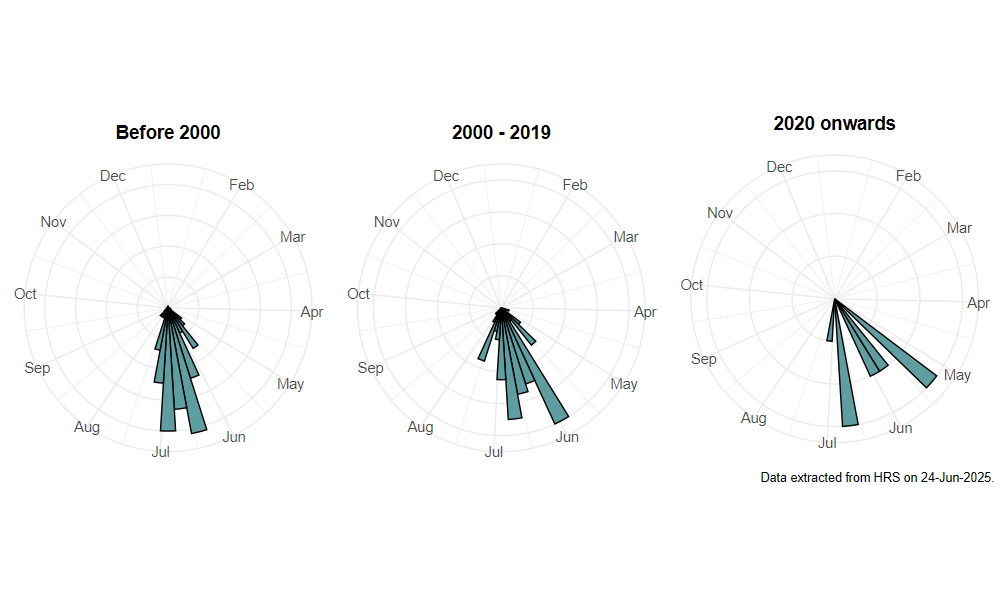Cheilosia vicina (Zetterstedt, 1849)
Identification
Identification difficulty = 3. ![]()
![]() according to Ball & Morris, 20241
according to Ball & Morris, 20241
Synonymy
Cheilosia nasutula Becker in Stubbs & Falk (1983)2.
Biology
The larva of this species remains unknown. Adults are most often found visiting flowers in either open or wooded situations (both deciduous or coniferous), or (especially males) basking on sun-lit leaves.
Flight period
The following plots show the number of unique records per week excluding those reported to be of immature stages.

Distribution
This species has a markedly northern distribution. It is frequent from North Wales and the Pennines northwards, and is amongst the commonest Cheilosia in Scotland. There are a few records from southern England, but confusion with C. antiqua and C. nigripes is possible and consequently several such records have been discounted.

Trends
The following plots show the Frescalo TFactor vs year and a map of the rescaled frequency (all records) for the species.